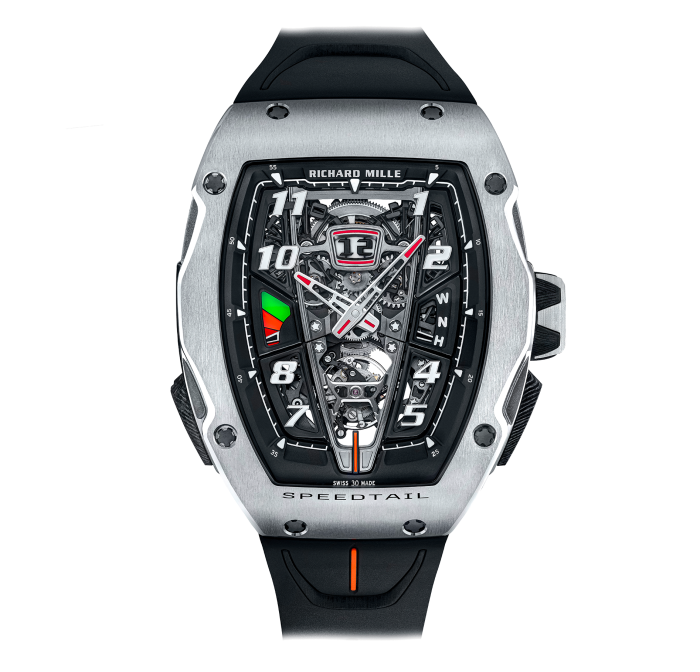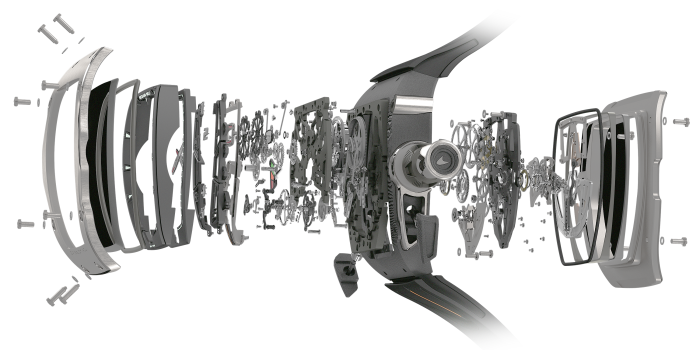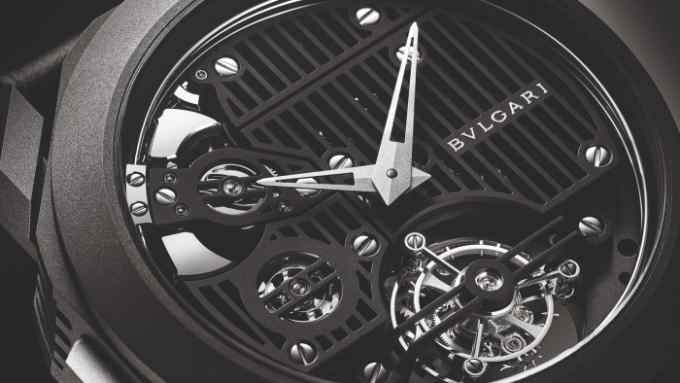Deconstructed Watch: RM 40-01 Automatic Tourbillon McLaren Speedtail
Roula Khalaf, Editor of the FT, selects her favourite stories in this weekly newsletter.
Plenty of partnerships have been formed between car marques and watch makers over the years, but few have made more sense than that between McLaren and Richard Mille — both specialise in expensive, low-volume products with the emphasis on boundary-pushing engineering and high-tech materials.
The pair announced a longstanding deal back in 2016, kicking it off with a watch called the RM50-03 and following-on two years later with the RM11-03 flyback chronograph that was unveiled at the Geneva Motor Show alongside the newly-launched McLaren P15 Senna supercar.
But only a few months later, McLaren announced plans to build “the world’s first Hyper GT” in the form of the Speedtail, the car that has been called the spiritual successor to the legendary F1 road car of the early 1990s, examples of which now change hands for more than £10m apiece.

Even before the Speedtail was announced, however, the two companies had already started on a project to create a suitably extreme watch to complement it.
And here it is in all its ‘deconstructed’ glory: the RM40-01 self-winding tourbillon, a truly impressive piece of micro-engineering that has been entirely developed around the three-seater Speedtail’s distinctive ‘teardrop’ silhouette.

It was said to have taken Richard Mille’s casing department 2,800 hours spread across 18 months to perfect the design, which both mimics the form of a water droplet and alludes to the car’s aerodynamic features — the bezel indentations evoke the bonnet openings, the push-pieces recall the air outlets behind the front wheels.
Five prototypes were required in order to perfect the case, mainly because it is significantly wider at 12 o’clock than at six o’clock and has a taper between the titanium bezel and the back, the two being held together with unequal length titanium pillars to form a ‘sandwich’ with the Carbon TPT band.
The unique design inevitably demanded a unique movement, and the RM40-01’s CRMT4 ‘engine’ took a claimed 8,600 hours to develop.
Comprising 603 components, it is made largely from titanium with a platinum and red gold winding rotor inspired by the car’s bonnet and the barrel-setting by its roof line.
The mechanism’s curve from 12 o’clock to six o’clock is based on the brushed metal divider between the car’s cockpit and its bodywork, and the orange line running from the lower part of the movement and on to the strap recalls the vertical stoplight mounted in the Speedtail’s rear screen.
And, speaking of glass, the sapphire crystal that protects the 52mm by 42mm watch is tapered to a scarcely believable 0.2 of a mm — yet is still said to be water resistant down to 50 metres. Like the McLaren Speedtail, the watch is limited to 106 examples — although it costs just half as much as the car. So only about $1m (plus taxes).

Comments